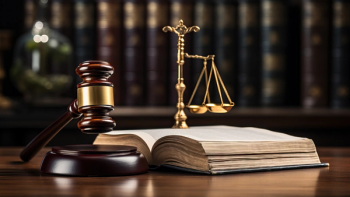
- Pharmaceutical Executive-10-01-2014
- Volume 0
- Issue 0
New Patent-Defense Path for Pharma
Inter Partes Review can potentially offer a more economical and streamlined litigation strategy for pharma and biotech players, writes David Dalke.
Just over three years ago, Congress enacted the America Invents Act, hailed as "one of the most significant legislative reforms to the patent system in our Nation's history." The Act included several sweeping changes, including advent of Inter Partes Review (IPR)—a new litigation procedure held before the Patent Trial and Appeal Board (PTAB) to challenge the validity of patent claims. Designed to be a faster and less expensive alternative to district court litigation, IPRs have taken the patent bar by storm.
Before enactment, the United States Patent and Trademark Office (USPTO) anticipated handling 460 IPR petitions annually. But the response by patent challengers has been overwhelming, with more than 1,750 petitions filed in the first two years, resulting in 114 final decisions through September. In 2013, 87% of the petitions filed met the "reasonable likelihood that the challenger will prevail" standard and progressed to trial. That number has decreased slightly in fiscal year 2014, with trials being instituted in "only" 76% of the petitions filed. The majority—more than 86%—of the petitions have challenged electrical and mechanical patents, while petitions challenging pharmaceutical and biotech patents account for just over 5%.
Several factors may explain the disparity. First, it may be simple math—according to one source, about five-fold more patents are granted on electrical inventions than on pharmaceutical and biotech inventions. Another reason may be statutory. IPR challenges must be based on printed publications and arguments are limited to anticipation and obviousness. In contrast to the "predictable" nature of electrical and mechanical inventions, biotech and pharmaceutical patents are considered to be "unpredictable and undeveloped art." The USPTO routinely requires a stronger showing of showing of enablement and places greater scrutiny on the written description requirement for pharmaceutical and biotech inventions. Thus, common rejections encountered during patent prosecution in the unpredictable arts—lack of written description or enablement, and obviousness-type double patenting—are not proper bases for challenging patent claims via IPR.
Nonetheless, if a potentially invalidating prior art is available, IPRs can be a useful tool offering several unique advantages over traditional district court litigation, particularly for smaller companies with limited financial resources.
The IPR framework is set by statute. Briefly, a challenger prepares a petition, typically supported by an expert declaration, providing detailed reasons why each challenged claim is invalid. Then, the patent owner has the option of submitting a preliminary response focusing on the propriety of the petition. Within three months after a preliminary response is filed or waived, the Board will decide whether to initiate a trial after evaluating whether the petition includes evidence suggesting that the petitioner has a reasonable likelihood of proving invalidity of at least one challenged claim.
Once initiated, IPR trials offer several advantages over district court litigation. First, IPRs provide for quicker, streamlined proceedings before judges who have been hired, in part, based on their patent and technical expertise. The Board is then required to render a written decision within 12 months after the decision to institute the IPR trial, although an additional six months are available with a showing of good cause. Thus, an entire IPR proceeding, including the time for an appeal to the Federal Circuit, can occur in about half the time it takes for traditional district court litigation.
Second, IPRs can offer significant cost advantages. According to AIPLA, costs of defending patent litigation in district court frequently surpass several million dollars. IPR costs, on the other hand, typically range in the of hundreds of thousands of dollars.
The limited discovery available in IPR proceedings is the primary driver of reduced costs. In an IPR, discovery is generally limited to documents cited in the parties' filings and depositions of the parties' declarants. Interrogatories, requests for admission, and extensive document collection and review are not typically available in IPR proceedings. Costs are further reduced because infringement is not at issue. And, in many cases, stays of parallel district court litigation may be possible. Third, the burden of proof required to prove invalidity is lower in IPR proceedings than in district court. Patents issue with a "presumption of validity" that must be overcome by "clear and convincing evidence" of invalidity in district court. However, challenged patents do not enjoy this presumption in IPR proceedings, which are governed by the lower and more challenger-friendly "preponderance of the evidence" standard. Finally, in IPR proceedings, claims are given their "broadest reasonable construction," which should operate to increase the amount of prior art available to the challenger.
The differential standards governing validity challenges in the USPTO and district court can lead to unusual results, further illustrating a benefit to potential patent challengers.
In In re Baxter,1 the Federal Circuit affirmed a finding of invalidity based on obviousness decided by the USPTO after a re-examination proceeding, despite the fact that the very same patent was found to be valid by a district court—in a decision later upheld by the Federal Circuit.
In addition to these potential benefits, there are certain drawbacks that should be considered when contemplating IPR. The prospect of estoppel looms as the primary downside for patent challengers. Once the Board issues its final decision, estoppel attaches and precludes the petitioner from raising in district court any invalidity argument that was raised or reasonably could have been raised during the IPR. In the pharmaceutical and biotech spaces, however, the estoppel effect may not be as onerous as it is in the electrical or mechanical spaces. Even though a challenger could be precluded from arguing invalidity based on anticipation or obviousness, arguments based on lack of written description or enablement, and obviousness-type double patenting remain viable options in district court litigation and are unaffected by the estoppel provisions. Thus, a petitioner may be able to take advantage of IPR proceedings based on prior art and still have certain invalidity defenses available in district court if the IPR is unsuccessful.
Despite the relatively small percentage of IPRs relating to biotech and pharmaceutical patents, a handful of written decisions have issued and provide some interesting information. Apotex and Ranbaxy were among the first pharmaceutical companies to take advantage of IPR proceedings. In 2013, Apotex submitted a petition challenging patents owned by Alcon Pharmaceuticals directed to Travatan Z, a drug for reducing intraocular pressure. Determining that there was a "reasonable likelihood" that Apotex would prevail, the Board instituted a trial. Previously, a district court had determined that one of the challenged patents was not invalid based on the same prior art references Apotex presented to the Board. Ultimately, the parties settled before a written decision issued. Ranbaxy has also used IPR proceedings to its benefit. In 2013, it challenged a patent held by Vertex Pharmaceuticals directed to the HIV drug Levixa. As with the Apotex cases, the Board instituted a trial that settled prior to issuance of a written decision. Ultimately, the parties settled not only the IPR, but also any potential Hatch-Waxman litigation on the patent. Thus, through strategic use of IPR, Ranbaxy was able to ensure that it would not be sued in district court on the same patent.
Although settlement is encouraged in IPR proceedings, there is no guarantee that the Board will refrain from issuing a written decision if the parties settle, especially as the proceedings move toward the hearing stage. At least one petition has been filed to ostensibly force a written decision. In August, the Initiative for Responsibility in Drug Pricing LLC (IRDP), which is not a pharmaceutical company, filed a petition challenging a Wyeth patent directed to the antibiotic Tygacil. IRDP's petition mirrors the arguments and relies on the same prior art Apotex submitted in its petition on the same patent. In its petition, IRDP explains that "it is possible that Apotex and [Wyeth] will settle and move to terminate [the IPR] so that no written decision issues for the [challenged patent] in a timely fashion." According to IRDP, "settlements between brand-name and generic pharmaceutical companies ... do not serve the public interest."
Not all pharmaceutical IPRs settle. Notably, in June, the Board issued written decisions in a series of related IPRs brought by Gnosis S.p.A. challenging patents directed to vitamin supplements held by the South Alabama Medical Science Foundation (SAMSF). The Board determined that several challenged claims were invalid as obvious over a combination of U.S. and foreign patents and references, despite the patent owner's substantial evidence of commercial success—one of the so-called objective indicia of non-obviousness. After considering the evidence, the Board concluded that SAMSF failed to link commercial success to any particular aspect of the claimed invention, as the law requires. SAMSF has appealed the Board's decision to the Federal Circuit. Meanwhile, SAMSF's related district court litigation against Gnosis and other defendants involving the same patents, is stayed.
Boom for biotech
Biotech companies have also taken advantage of IPRs. The first biotech IPR decisions were handed down in March when the Board invalidated patents owned by Columbia University directed to technology known as "sequencing by synthesis." During the IPR, which was initiated by Illumina Inc., the Board rejected Columbia's efforts to amend the challenged claims. Although IPR rules allow claim amendments, the rules are strict and strongly favor the petitioner. For example, proposed amendments may only respond to arguments presented in the IPR petition and must narrow the scope of claim. Moreover, the patent owner must demonstrate the patentability of the proposed amendments by explaining how the proposed amendments are novel over both the prior art identified in the IPR, as well as any prior art known by the patent owner.
Whether as a potential pressure point for settlement or as tool for challenging patent claims, IPRs are proving to be popular options for companies seeking patent certainty, either as a standalone procedure or in conjunction with parallel district court litigation.
1In re Baxter Int'l Inc., 678 F.3d 1357 (Fed. Cir. 2012).
David Dalke, PhD, is of counsel at Winston & Strawn LLP. He can be reached at
Articles in this issue
over 11 years ago
The Human Microbiome—Our Body's Secret Weaponover 11 years ago
Ebola Crisis Challenges Pharma R&Dover 11 years ago
Gain a Competitive Edge: Think Like a Navy SEALover 11 years ago
Eruptions on the Drug-Pricing Horizon in Europeover 11 years ago
The Gate Keeper: Dr. David Haslam, Chair of NICE, UKNewsletter
Lead with insight with the Pharmaceutical Executive newsletter, featuring strategic analysis, leadership trends, and market intelligence for biopharma decision-makers.




